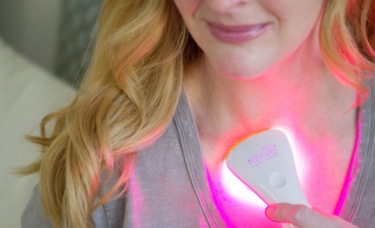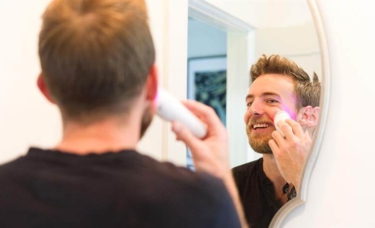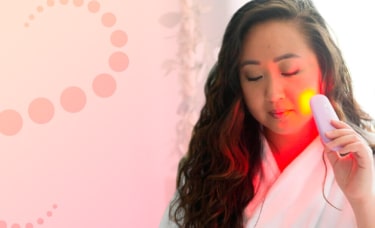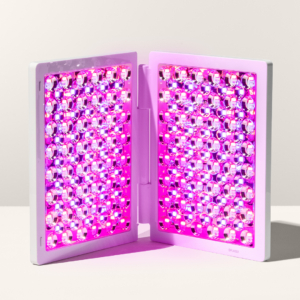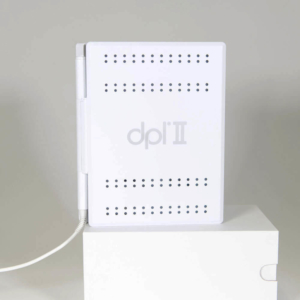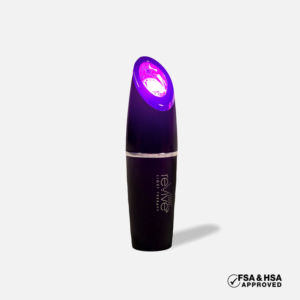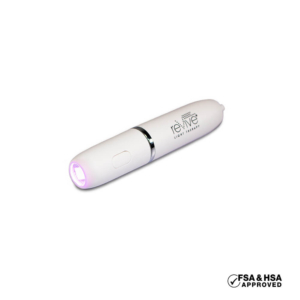What is LED Light Therapy and What Skin Conditions Can It Help?
Millions of people suffer from skin conditions that range from slightly annoying to life-threatening. According to the American Academy of Dermatology, 50 million Americans experience acne each year, 7.5 million suffer from psoriasis, and a staggering 9,500 Americans are diagnosed with skin cancer every day. Light therapy holds the potential to treat certain skin conditions.
Red and blue light therapy first became available in dermatology clinics and spas. Now, patients can get this technology in their own devices for home use. The range of applications for light therapy is still being explored by scientists, researchers, and other professionals in the health, wellness, and beauty fields. Here, we discuss exactly what skin conditions LED light therapy has been shown to address based on medical studies and other respected sources.
What is LED Light Therapy?
LED light therapy goes by many different names: photobiomodulation, laser therapy, and low level laser therapy, to name a few. More specific terms include red light therapy, infrared therapy, and blue light therapy. As the range of colors suggests, wavelengths of the light spectrum can reach different depths within the skin, causing different results.
Which Skin Conditions Can Light Therapy Treat?
Light therapy was first heralded by health professionals for its ability to stimulate cell regeneration and cell metabolism and reduce wrinkles or other signs of aging, specifically using red, near-infrared and infrared wavelengths. Blue light, at the other end of the visible spectrum, offers antibacterial action that helps treat acne. With this range of broad applications, different forms of LED light therapy can be tailored to specific skin conditions in people of all ages.
A 2018 study of LED light therapy published in the journal Lasers in Medical Science looked at the effects of LED light therapy on several hair and skin conditions. The general consensus was that light therapy “represents the emerging and safest tool for the treatment of many conditions such as skin inflammatory conditions, aging, and disorders linked to hair growth.”
Now, let’s take a look at how red, blue, and infrared light therapy can address some specific skin conditions.
Acne
The study from Lasers in Medical Science said, “both red and blue lights reveal their efficacy for the treatment of acne.” In fact, a combination of the two colors works best for acne. The blue light targets bacteria under the skin’s surface, while the red lights reduce inflammation, swelling and potential scarring while also increasing blood circulation to aid in healing. Home acne light therapy devices can be small and affordable up to larger panels with professional level technology.
Psoriasis
Psoriasis is an autoimmune disorder that causes rapid turnover of skin cells. Because the skin produces new cells faster than it can shed them, it develops rough or scaly, often painful patches called plaques. There is no cure, so sufferers rely on various treatments to manage symptoms.
In a study of red and blue light therapy, psoriasis patients had their plaques treated with red and blue light therapy, after first using salicylic acid to soften the area. Over the course of six treatments, improvement was seen, although it did not continue past that point. Since this was a small study, more research is needed. For now, much of the psoriasis research focuses on UV light, which unfortunately, also ages skin prematurely and can lead to skin cancer. However, since red and blue light therapies come with little to no risk of side effects, you can test your own personal results at home.
Atopic Dermatitis and Eczema
Eczema is the most common type of atopic dermatitis, essentially an umbrella term for inflammation of the skin caused by the immune system. As with psoriasis, much of the research into light therapy for eczema has looked at UV light. However, several small studies have demonstrated the efficacy of blue light for psoriasis, some testing it in combination with topical corticosteroids. A 2016 study published in the journal Dermatology showed statistically significant improvement of lesions, measured by the Eczema Severity Index, for 21 patients. The researchers concluded that “UV-free blue light was safe and effective in the reduction of eczema lesions.”
Alopecia
Alopecia, or alopecia areata, is an unpredictable and often frustrating loss of hair. It can happen anywhere on the body, but most often on the scalp, causing male or female pattern baldness. With this disease, the body attacks its own hair follicles, causing hair to fall out. According to Harvard Health, some studies show that red light may help to restore hair.
Skin Cancer
Skin cancer is the uncontrolled growth of abnormal cells in the outermost layer of skin, or epidermis, caused by mutations from damaged DNA. There are multiple types of skin cancer, including basal cell cancer, melanoma, and squamous cell carcinoma, which can have different appearances. First, if you suspect you may have any form of skin cancer, consult a dermatologist. They can conduct a biopsy to diagnose you. Home LED light therapy is not currently available for treating skin cancer. However, medical professionals can employ a regimen of photodynamic therapy and pharmaceuticals to kill cancer cells. A doctor either applies a drug in a topical application or injects it into the bloodstream before treating the patient with LED light. According to the American Cancer Society, there are no long term side-effects.
Are There Potential Side Effects of Light Therapy for Skin Conditions?
Unlike UV lights, which can age the skin prematurely or even cause skin cancer, non-UV red or blue light devices carry little risk of side effects. For the best results, choose FDA-cleared LED devices and follow all recommendations from the manufacturer for how to use the light therapy treatments safely and effectively. While you cannot treat skin cancer with a home LED device, you can treat many other skin conditions, all without exposing yourself to harmful UV light.
Test Different Light Therapy Devices to Learn What Works Best for Your Skin
Every person’s body is unique and reacts to light therapy differently. For that reason, we encourage everyone to run a baseline test when they buy an LED light therapy device. First, test it on your forearm for no more than three minutes, then watch for any redness or irritation for 24 hours. If you don’t see any unwanted reaction, then start using the device regularly, following the manufacturer’s directions and wearing eye protection as indicated. We also suggest speaking with your doctor or dermatologist before trying light therapy in your skin care regimen to rule out any individual risk factors.
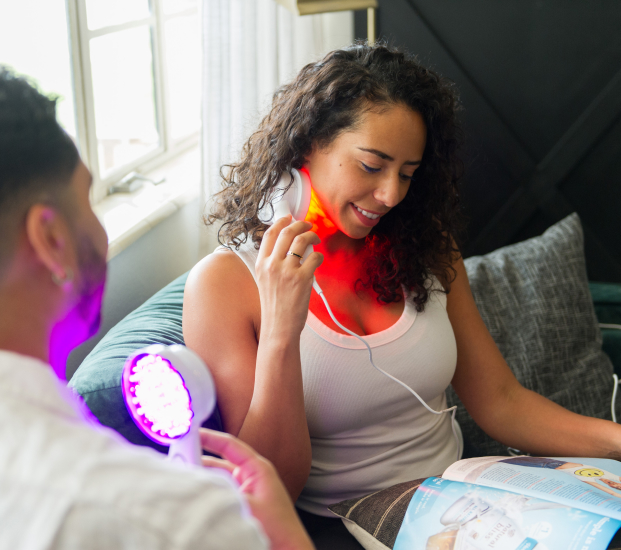
Experience the power of light therapy at home
Specific wavelengths of light have different effects, and can be used for a variety of applications — from destroying acne-causing bacteria to killing harmful germs on your phone. Our light therapy devices allow you to harness the power of LEDs in the comfort of your own home.
See How It Works

